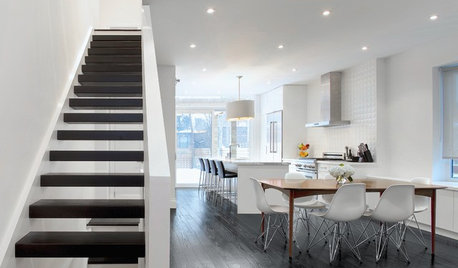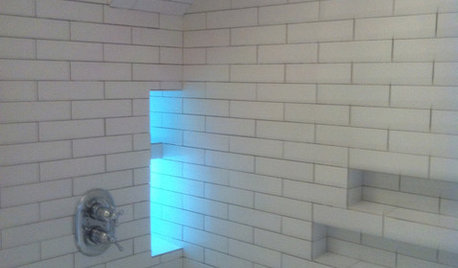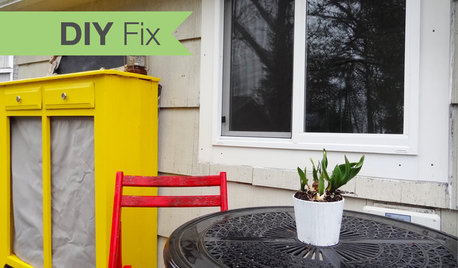Sealing of ductwork
vanenk
14 years ago
Related Stories

HOUZZ TOURSMy Houzz: High End Meets Budget Friendly in Toronto
Splurging selectively and saving elsewhere, a Canadian family gets a posh-looking home that matches their vision
Full Story
HEALTHY HOMEGet Cleaner Indoor Air Without Opening a Window
Mechanical ventilation can actually be better for your home than the natural kind. Find out the whys and hows here
Full Story
MATERIALSShow Off the Bones of Your Home With Exposed Finishes
There can be beauty in raw materials. Display them with care, and the effect is surprisingly warm and welcoming
Full Story
MOST POPULAR15 Remodeling ‘Uh-Oh’ Moments to Learn From
The road to successful design is paved with disaster stories. What’s yours?
Full Story
BATHROOM DESIGN10 Top Tips for Getting Bathroom Tile Right
Good planning is essential for bathroom tile that's set properly and works with the rest of your renovation. These tips help you do it right
Full Story
FLOORS5 Benefits to Concrete Floors for Everyday Living
Get low-maintenance home flooring that creates high impact and works with home styles from traditional to modern
Full Story
HOUSEKEEPINGWhat's That Sound? 9 Home Noises and How to Fix Them
Bumps and thumps might be driving you crazy, but they also might mean big trouble. We give you the lowdown and which pro to call for help
Full Story
Replace Your Windows and Save Money — a How-to Guide
Reduce drafts to lower heating bills by swapping out old panes for new, in this DIY project for handy homeowners
Full Story
MATERIALSRaw Materials Revealed: Drywall Basics
Learn about the different sizes and types of this construction material for walls, plus which kinds work best for which rooms
Full Story
ACCESSORIESEveryday Home Must-Haves Beg for a Makeover
The Nest's much-improved take on the thermostat has us pondering reinventions of other necessities around the house
Full StoryMore Discussions






countryboymo
energy_rater_la
Related Professionals
Dana Point Solar Energy Systems · Elmwood Park Solar Energy Systems · Los Angeles Solar Energy Systems · Peabody Solar Energy Systems · Ramsey Solar Energy Systems · South Whittier Home Automation & Home Media · Alexandria Home Automation & Home Media · Inglewood Home Automation & Home Media · North Merrick Home Automation & Home Media · Palo Alto Home Automation & Home Media · Federal Heights Home Automation & Home Media · East Cleveland Home Automation & Home Media · Grafton Electricians · Freehold Fireplaces · Layton FireplacesvanenkOriginal Author
johnax
energy_rater_la
vanenkOriginal Author
roan17_comcast_net